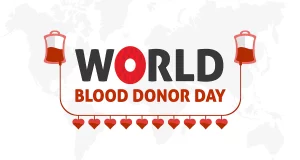Guerrilla Marketing: Unconventional Tactics for Maximum Impact
Introduction
In the ever-evolving landscape of marketing, where consumers are constantly bombarded with advertisements and promotions, it’s essential for businesses to find creative and attention-grabbing ways to stand out. Guerrilla marketing is a strategy that thrives on innovation and surprise, leveraging unconventional tactics to make a big impact without a big budget. In this article, we’ll dive deep into the world of guerrilla marketing, exploring its origins, key principles, and successful examples.
The Origins of Guerrilla Marketing
Guerrilla marketing is a concept that traces its roots back to the 1980s when Jay Conrad Levinson coined the term in his book “Guerrilla Marketing.” The core idea behind guerrilla marketing is to use unconventional methods to achieve maximum results with minimal resources. It’s a David-versus-Goliath approach that empowers small businesses to compete with industry giants.
Principles of Guerrilla Marketing
- Creativity Is Key
- Guerrilla marketing thrives on creativity. It’s all about coming up with ideas that are unique, attention-grabbing, and memorable. Think outside the box!
- Low Cost, High Impact
- One of the primary advantages of guerrilla marketing is its cost-effectiveness. These campaigns don’t require massive budgets; they rely on ingenuity and resourcefulness.
- Surprise and Delight
- Guerrilla marketing aims to surprise and delight the audience. It creates a buzz by offering unexpected experiences that leave a lasting impression.
- Leverage Social Media
- In the digital age, guerrilla marketing often incorporates social media to amplify its reach. Viral campaigns can spread like wildfire.
Successful Guerrilla Marketing Campaigns
Let’s take a look at some standout guerrilla marketing campaigns that have made waves in recent years:
1. The Ice Bucket Challenge
- Remember when the Ice Bucket Challenge took over social media? It was a brilliant example of guerrilla marketing. A simple idea, a viral sensation, and massive donations for ALS research.
2. Red Bull’s Stratos Jump
- Red Bull sponsored Felix Baumgartner’s record-breaking jump from the edge of space. This extreme stunt not only captured the world’s attention but also solidified Red Bull’s brand as synonymous with daring adventure.
3. Airbnb’s Floating House
- Airbnb once floated a house down the River Thames in London. This audacious move showcased their commitment to providing unique travel experiences and garnered significant media coverage.
4. Burger King’s Subservient Chicken
- Burger King’s Subservient Chicken website allowed users to type in commands for a person in a chicken costume to perform. It was a quirky and interactive way to engage the audience.
The Guerrilla Marketing Toolkit
To succeed in guerrilla marketing, you need a toolkit filled with innovative ideas and strategies:
1. Street Art and Graffiti
- Street art can turn a dull urban environment into a canvas for creative promotion. Just be sure to secure the necessary permissions.
2. Flash Mobs
- Organize spontaneous gatherings of people in public places to create a buzz and capture the attention of bystanders.
3. Stunts and Publicity Stunts
- Unusual, attention-grabbing stunts can generate media coverage and social media buzz.
4. Ambush Marketing
- Associate your brand with a popular event or competitor to piggyback on their publicity.
Conclusion
Guerrilla marketing is the art of thinking differently. It’s about taking risks, challenging the status quo, and making a memorable impact. By embracing creativity, leveraging low-cost strategies, and surprising and delighting your audience, you can achieve remarkable results even on a limited budget. So, don’t be afraid to step out of your comfort zone and embrace the guerrilla spirit to propel your marketing efforts to new heights.
FAQs
1. Is guerrilla marketing suitable for all businesses?
- Guerrilla marketing can be adapted for various businesses, but it’s particularly effective for small businesses with limited budgets.
2. How do I measure the success of a guerrilla marketing campaign?
- Success can be measured through metrics like social media engagement, website traffic, and increased brand awareness.
3. Are there any legal considerations in guerrilla marketing?
- Yes, it’s crucial to ensure your guerrilla marketing tactics comply with local laws and regulations to avoid legal issues.
4. What if my guerrilla marketing campaign fails?
- Failure is a possibility, but it’s also a valuable learning experience. Analyze what went wrong and adjust your strategy for future campaigns.
5. Can guerrilla marketing work in the digital realm?
- Absolutely! Online guerrilla marketing often involves viral content, interactive websites, and creative social media campaigns to engage a global audience.





